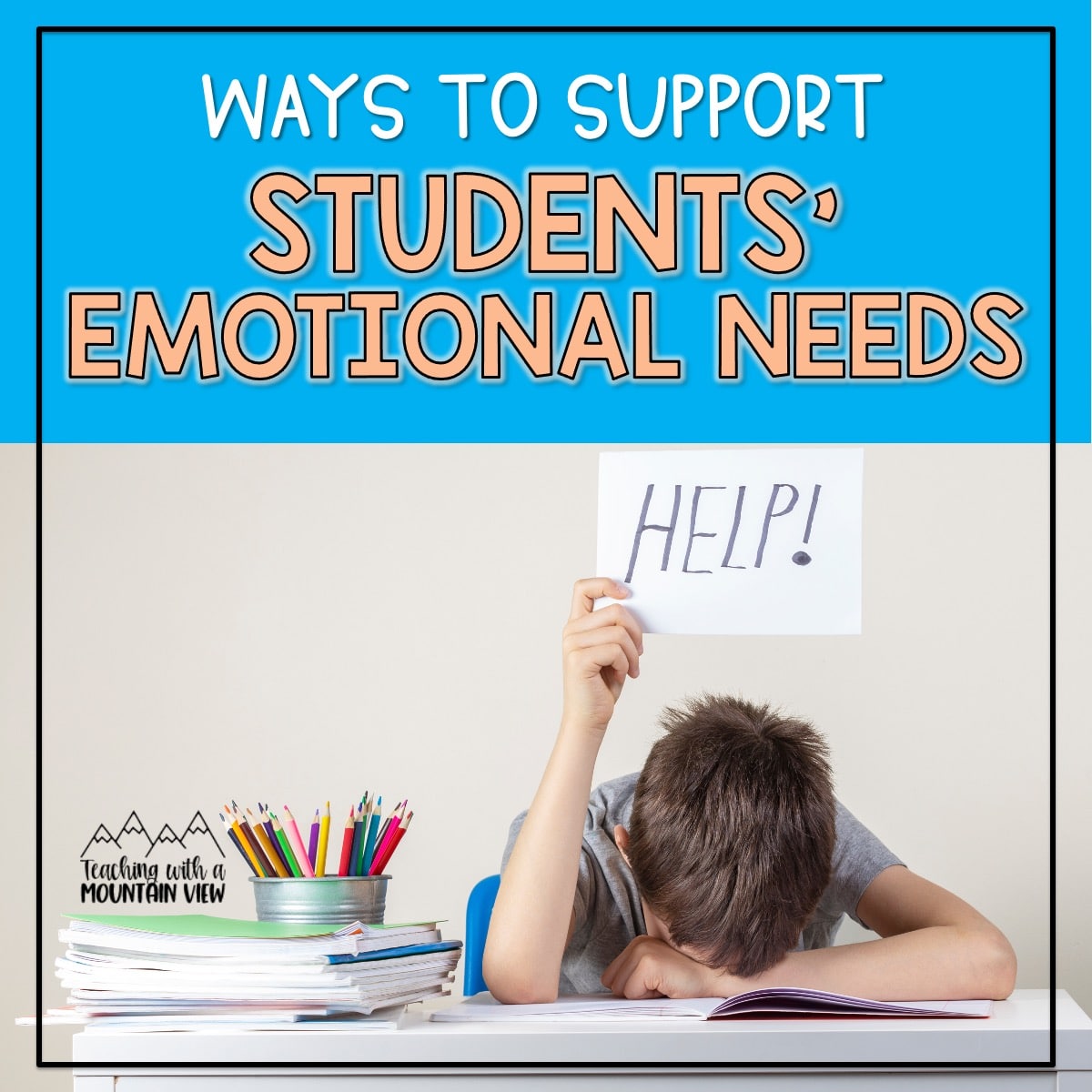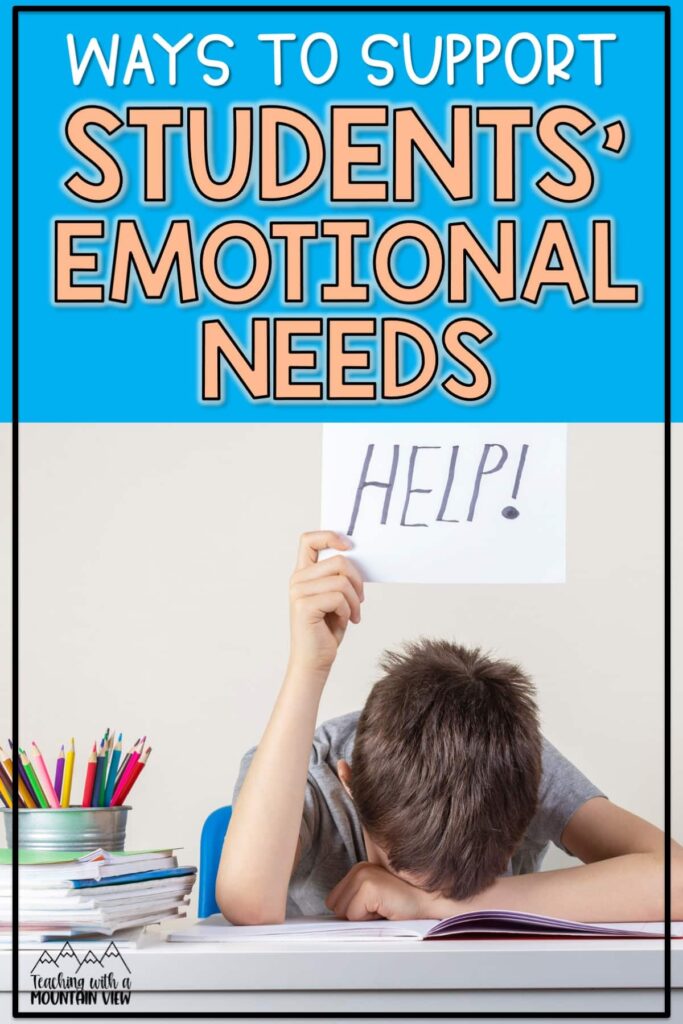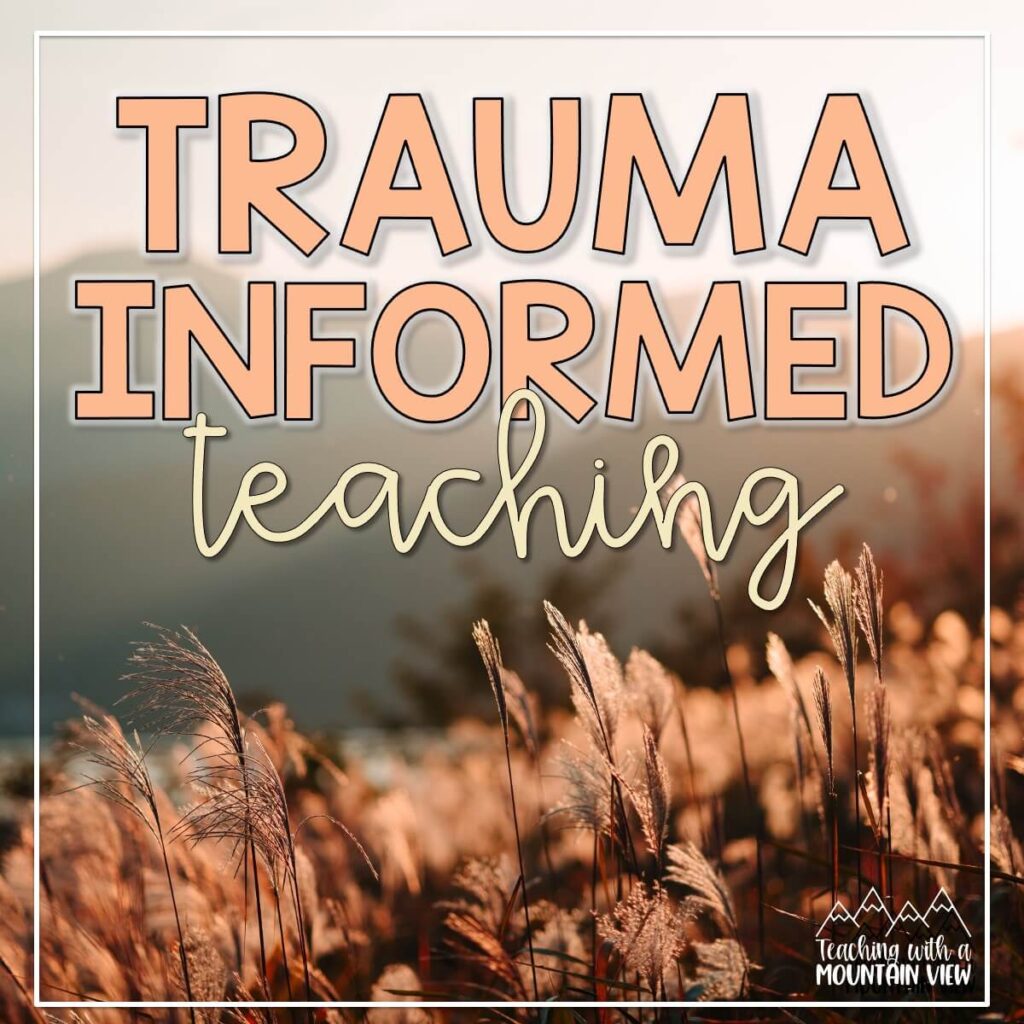Ways to Support Students’ Emotional Needs in the Classroom
By Mary Montero
Share This Post:

In today’s classroom, teachers are not only teaching rigorous academic standards, preparing for crucial state-wide assessments, and meeting astronomical administrative requirements, but we are now climbing another mountain that has only recently begun to be addressed… students’ emotional needs, specifically in the area of coping skills. Whether it’s because the foundation at home isn’t there, the onslaught of technology and lack of human interaction, or numerous other reasons, many students today do not know how to cope with challenging situations.
Situations such as losing a friend due to an argument, forgiving someone who has hurt you, sharing, and asking for help when frustrated may seem simple to adults whose brains are fully developed, but for students who have not been taught coping skills for these situations before, learning to cope can be difficult.
This is where we as teachers step in to put aside the ever-growing to-do list to meet our students’ emotional needs, which are often just as important as meeting their academic needs. In fact, our students often can’t fully tune into our lessons and absorb content when their emotional needs aren’t met.
I know that it can feel like you are taking on a lot in the classroom, so here are some simple coping strategies and resources that make meeting your students emotional needs a little less overwhelming.

Seek Help in Your School and Community
One of the biggest takeaways when it comes to the emotional needs of our students is that you don’t have to do it all alone. Many of us haven’t received extensive counseling training, but there are many school and community resources that can help!
Reach out to people who are experts. In most schools there are resources available to help you meet your students’ emotions needs, such as school counselors and behavior specialists.
There are also resources outside of schools that can help as well, such as Communities in Schools (CIS) and mentor programs. Ask your admin if these programs, or similar ones, are available.
With dwindling school budgets, finding local resources can be challenging. If you are struggling to find help, a reputable website can also offer suggestions for the classroom. For instance, this Children’s Healthcare company in Atlanta offers coping suggestions, along with this medically-reviewed article on VeryWell. Of course when you’re searching online, be sure you are using reputable websites.
Strategies to Meet Students’ Emotional Needs
Just like adults, students face stressful, overwhelming, and frustrating events! Think of a time when something upset you as an adult. You had coping strategies in place, but you still experienced heightened emotions. Students often don’t have coping strategies, which is what leads to outbursts and other behaviors.
There are several coping strategies you can use to help level out their emotions and return to a baseline.
Active Strategies
Active strategies focus on getting the body moving to help students distract themselves from whatever emotion they are feeling, which can de-escalate the emotion. These coping strategies work really well as brain breaks. After a tough lesson, get students moving. Before a test, get them dancing!
One year, my classroom was right outside the cafeteria. I would send upset students to walk a lap around the cafeteria when they were feeling overwhelmed. It was never said as a punishment. A simple, “Hey, why don’t you take a slow walk around and take some deep breaths, alright?” You can also do this down the hallway or from one end of the classroom to the other.
More active strategies:
- Run in place
- Yoga
- Squeeze a stress ball
- Dance to music
- Jumping Jacks
Relaxing Strategies
For some students or situations, the active strategies won’t work. Another type of coping mechanism is relaxing strategies. You can build calming strategies into your classroom through a calm corner or calm station. A student can go here, set a timer, and spend a few minutes reading or simply closing their eyes. You can also send a student to get water as a way to calm down. Lastly, lead a quiet reading time or meditation when you notice student emotions getting high.
More relaxing strategies:
- Read a book
- Listen to calming music
- Meditate
- Journal
- Get a drink of water
- Close your eyes and count to 10
Social Strategies
If you’ve ever needed to just get away from someone or a situation and vent to a friend, you were exhibiting social coping strategies! With social strategies, students can use the support of others to meet their emotional needs. The student doesn’t need to talk about his or her frustration (in fact, younger students may not be able to express what they feel), but instead just talking to others can take their mind away from the emotions.
More social strategies:
- Read with a friend
- Play a game with a friend
- Talk with a friend
Creative Coping Strategies
Giving students a space to release their energy through creativity is another helpful coping strategy. You can incorporate this in your classroom through creative activities like drawing a picture with an assignment, allowing students to use fidget devices, or even including hands-on learning (such as manipulatives or blocks to showcase their knowledge).
More coping strategies:
- Build with legos or blocks
- Coloring sheets
- Playing with a fidget toy
Ways To Practice Coping Skills
A lot of the things we naturally do as adults are actually coping strategies. Who loves a good workout after a stressful day? That’s coping! The more chances students have to practice coping skills, the better. Some of the best opportunities to practice are in the midst of situations which require coping skills. If students are struggling, use this time to model and point out previously discussed ways of coping with this situation in a healthy, mature way.
If you aren’t sure how to intentionally practice coping skills, try these three activities.
Role Playing: Practice role-playing situations based on scenarios you’ve noticed in your classroom. For example, if a student shows frustration sharing with others, then role-play with that student how to share and how sharing can be a fulfilling experience.
Scenario Games: These can be quick 5-10 minute activities at the beginning or end of class. Give students a scenario (earning a low grade, trouble making friends, complying with adults), then talk through the scenario as a class. Ask the students how they should handle the situation. Make a quick, interactive PowerPoint game and have them pick the best answer to each scenario. Finally, talk through the reasoning for the correct answer(s).
Modeling: One of the best tools a teacher can use in any situation is modeling. Just like modeling academic concepts, model ways to cope with different scenarios. When a student exhibits struggles, model the best ways to cope for the specific situation.
More Ways to Support Students’ Emotional Needs
These ways to teach coping skills may seem simple, but when consistently implemented and utilized, they can be life-changing for students. It’s cliche, but profoundly true… teachers teach way beyond words on a page and standards from the state. Sometimes we are one of the only role-models our students have. Our work is so important and prepares students not only for academic success, but personal success as well.
This post on trauma-informed teaching is another great resource that can help you support your students’ emotional needs.
Mary Montero
I’m so glad you are here. I’m a current gifted and talented teacher in a small town in Colorado, and I’ve been in education since 2009. My passion (other than my family and cookies) is for making teachers’ lives easier and classrooms more engaging.













 Giggles and Grammar | Upper Elementary Grammar Program
Giggles and Grammar | Upper Elementary Grammar Program